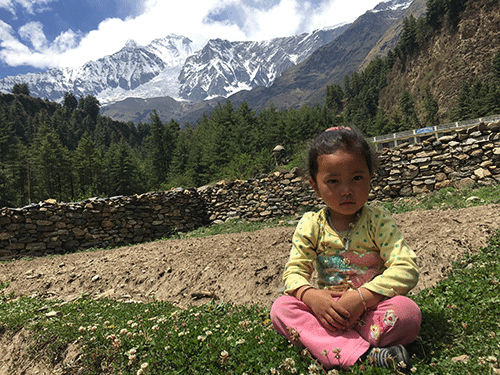At first glance, permaculture and social work might look like unrelated fields, but in many ways the two converge. In fact, the basic goals are the same! Permaculture, developed by Bill 
In April I had the opportunity to visit Nepal and study permaculture in the heart of the Himalayas, trekking to remote villages along the beautiful Annapurna Circuit while learning practical permaculture tools through service to local communities. The villages we visited were virtually cut off from the rest of the world until just a few years ago when a road was built. They continue to maintain a impressive organic gardening system and close knit community, sustainable and self-sufficient in design. I was awed by these examples of integrated living systems and communities preserved in these Nepalese mountain villages. I have brought this perspective home to Hawaii to inform my personal and professional life as I work to generate a higher level of sustainability and self-sufficiency in my lifestyle.
While Permaculture is a expansive complex subject, I would like to share the three basic ethics and their application to social work.
CARE FOR THE EARTH:
This ethic is especially important in this day and age. As I was writing this post I went for a walk on the beach to gain inspiration and felt overwhelming sadness noticing the increasing number of plastics that are washing up on the beaches here in Hawaii. This lead me to think about the world wide problem of plastics and the increasing need to prioritize our care of the earth with urgency, developing sustainable practices that will allow us to live in harmony with the earth.

CARE FOR PEOPLE
Caring for each other is at the very heart of social work, allowing us to work towards harmony on a personal level. As we transform personal trauma, we are better able to engage in healthy relationships and better able to share our talents and gifts with society at large.
FAIR SHARE OF RESOURCES:
The fair share of resources principle highlights our need to addressing the vast inequalities that are present in society today. With one percent of our population hoarding resources, while an increasing number of people are unable to meet their basic needs, our system is fundamentally flawed. Social work as a profession is committed to assisting disenfranchised individuals and communities to navigate the system, gaining access to resources for self actualization and self determination.
A few other of my favorite permaculture principles that I have found helpful to use to inform my social work practice are:
The problem is the solution
Integrate rather than segregate
Use small and slow solutions
Apply self regulation and accept feedback
Creatively use and respond to change





